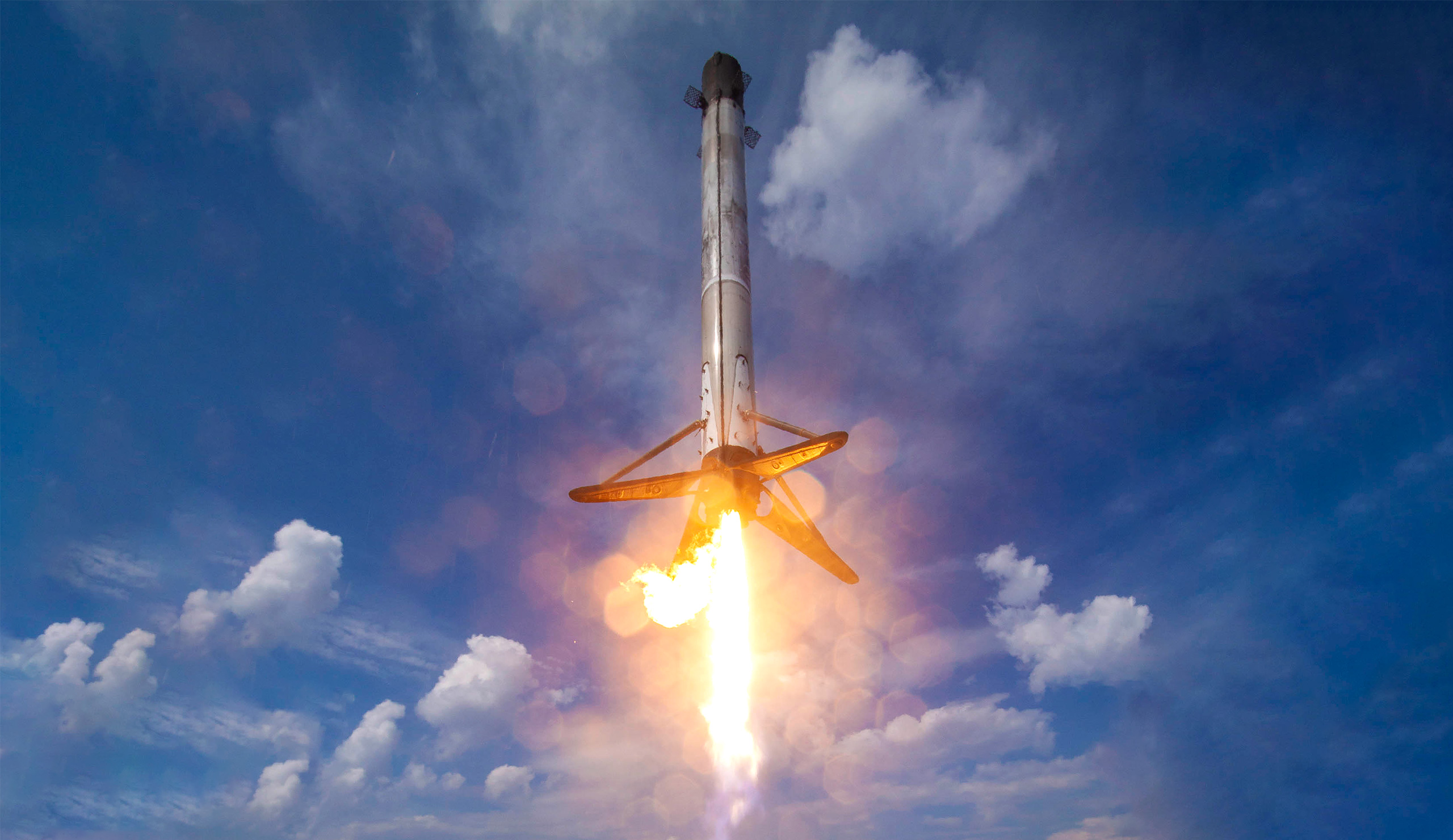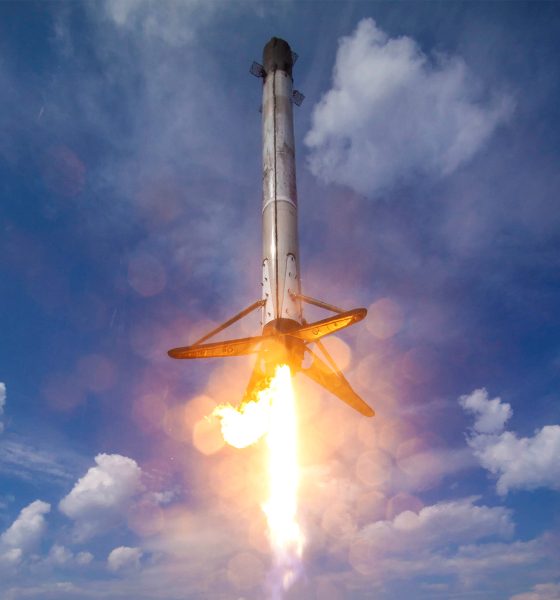

News
SpaceX fires up Falcon 9 for first flight-proven ‘national security’ launch
On June 12th, SpaceX successfully fired up a once-flown Falcon 9 booster in the lead-up to the company’s fourth launch of an upgraded GPS III navigation satellite for the US military.
Dating back several years, SpaceX has won a vast majority of GPS III launches thanks to Falcon 9’s exceptional combination of reliability and affordability, securing all five competitively-awarded contracts. The company aced its first GPS III launch in December 2019, expending a brand new Falcon 9 booster (B1054) due to customer – not performance – requirements necessary to ensure extreme margins in the event of some kind of anomaly or underperformance during launch.
In June 2020, SpaceX once again launched a GPS III satellite for the US military, though this time the company was allowed to attempt to land the Falcon 9 booster supporting the mission – which it successfully recovered without issue. Less than five months after GPS III SV03’s successful launch, SpaceX turned around and launched GPS III SV04 – again with an all-new Falcon 9 rocket – and recovered the booster at sea. A few months prior, however, the US Space and Missile Systems Center (SMC) announced a contract modification that would allow SpaceX to begin reusing Falcon 9 boosters on National Security Space Launch (NSSL) missions – beginning with the company’s fourth GPS III launch.
Seven months later, SMC revealed that it has officially cleared SpaceX to begin launching GPS III (and other official NSSL) satellites on flight-proven Falcon rockets. Notably, that might include a Falcon Heavy launch – USSF-52 – planned as early as January 2022 that could reuse two new side boosters scheduled to debut on USSF-44 as early as October 2021.
In the meantime, though, GPS III SV05 – scheduled to launch no earlier than (NET) 12:09 pm EDT (16:09 UTC), Thursday, June 17th – is just two days away from becoming the first NSSL (formerly EELV) satellite to launch on a flight-proven commercial rocket. GPS III SV05 will reuse the same Falcon 9 booster (B1062) that successfully launched GPS III SV04 seven months prior.
While an extremely slow turnaround relative to any other modern Falcon 9 or Falcon Heavy booster, those seven months mainly gave the US military margin to fully certify flight-proven Falcons and satellite manufacturer Lockheed Martin time to deal with shortage and coronavirus-related delays. On June 12th, after rolling out to SpaceX’s Cape Canaveral LC-40 launch pad, GPS III SV05’s Falcon 9 rocket completed a wet dress rehearsal that culminated in a successful several-second static fire of booster B1062.
Now cleared for flight, Falcon 9 will be brought horizontal and roll back to LC-40’s integration hangar, where SpaceX will install the encapsulated GPS III SV05 satellite and payload fairing on top of the rocket’s expendable second stage.
The integrated payload assembly rolled from a nearby payload processing facility to LC-40 on June 13th, giving SpaceX four days to complete integration, roll Falcon 9 back out to the launch pad, and prepare the rocket for flight. Now alone on the East Coast for the first time in 12 months, drone ship Just Read The Instructions (JRTI) departed Port Canaveral for the GPS III SV05 booster recovery zone on the same day, followed by the latest in a line of temporary fairing recovery ships on June 14th to scoop the mission’s nosecone halves out of the Atlantic.
L-3 weather forecasts predict a 40% chance of delay on June 17th, improving to 30% on June 18th. Stay tuned for webcast details as SpaceX nears the first of many flight-proven launches for the US military.

News
Tesla China delivery centers look packed as 2025 comes to a close
Needless to say, it appears that Tesla China seems intent on ending 2025 on a strong note.

Tesla’s delivery centers in China seem to be absolutely packed as the final days of 2025 wind down, with photos on social media showing delivery locations being filled wall-to-wall with vehicles waiting for their new owners.
Needless to say, it appears that Tesla China seems intent on ending 2025 on a strong note.
Full delivery center hints at year-end demand surge
A recent image from a Chinese delivery center posted by industry watcher @Tslachan on X revealed rows upon rows of freshly prepared Model Y and Model 3 units, some of which were adorned with red bows and teddy bears. Some customers also seem to be looking over their vehicles with Tesla delivery staff.
The images hint at a strong year-end push to clear inventory and deliver as many vehicles as possible. Interestingly enough, several Model Y L vehicles could be seen in the photos, hinting at the demand for the extended wheelbase-six seat variant of the best-selling all-electric crossover.
Strong demand in China
Consumer demand for the Model Y and Model 3 in China seems to be quite notable. This could be inferred from the estimated delivery dates for the Model 3 and Model Y, which have been extended to February 2026 for several variants. Apart from this, the Model Y and Model 3 also continue to rank well in China’s premium EV segment.
From January to November alone, the Model Y took China’s number one spot in the RMB 200,000-RMB 300,000 segment for electric vehicles, selling 359,463 units. The Model 3 sedan took third place, selling 172,392. This is quite impressive considering that both the Model Y and Model 3 are still priced at a premium compared to some of their rivals, such as the Xiaomi SU7 and YU7.
With delivery centers in December being quite busy, it does seem like Tesla China will end the year on a strong note once more.
News
Tesla Giga Berlin draws “red line” over IG Metall union’s 35-hour week demands
Factory manager André Thierig has drawn a “red line” against reducing Giga Berlin’s workweek to 35 hours, while highlighting that Tesla has actually increased its workers’ salaries more substantially than other carmakers in the country.

Tesla Giga Berlin has found itself in a new labor dispute in Germany, where union IG Metall is pushing for adoption of a collective agreement to boost wages and implement changes, such as a 35-hour workweek.
In a comment, Giga Berlin manager André Thierig drew a “red line” against reducing Giga Berlin’s workweek to 35 hours, while highlighting that Tesla has actually increased its workers’ salaries more substantially than other carmakers in the country.
Tesla factory manager’s “red line”
Tesla Germany is expected to hold a works council election in 2026, which André Thierig considers very important. As per the Giga Berlin plant manager, Giga Berlin’s plant expansion plans might be put on hold if the election favors the union. He also spoke against some of the changes that IG Metall is seeking to implement in the factory, like a 35-hour week, as noted in an rbb24 report.
“The discussion about a 35-hour week is a red line for me. We will not cross it,” Theirig said.
“(The election) will determine whether we can continue our successful path in the future in an independent, flexible, and unbureaucratic manner. Personally, I cannot imagine that the decision-makers in the USA will continue to push ahead with the factory expansion if the election results favor IG Metall.”
Giga Berlin’s wage increase
IG Metall district manager Jan Otto told the German news agency DPA that without a collective agreement, Tesla’s wages remain significantly below levels at other German car factories. He noted the company excuses this by referencing its lowest pay grade, but added: “The two lowest pay grades are not even used in car factories.”
In response, Tesla noted that it has raised the wages of Gigafactory Berlin’s workers more than their German competitors. Thierig noted that with a collective agreement, Giga Berlin’s workers would have seen a 2% wage increase this year. But thanks to Tesla not being unionized, Gigafactory Berlin workers were able to receive a 4% increase, as noted in a CarUp report.
“There was a wage increase of 2% this year in the current collective agreement. Because we are in a different economic situation than the industry as a whole, we were able to double the wages – by 4%. Since production started, this corresponds to a wage increase of more than 25% in less than four years,” Thierig stated.
News
Tesla is seeing a lot of momentum from young Koreans in their 20s-30s: report
From January to November, young buyers purchased over 21,000 Teslas, putting it far ahead of fellow imported rivals like BMW and Mercedes-Benz.

Tesla has captured the hearts of South Korea’s 20s-30s demographic, emerging as the group’s top-selling imported car brand in 2025. From January to November, young buyers purchased over 21,000 Teslas, putting it far ahead of fellow imported rivals like BMW and Mercedes-Benz.
Industry experts cited by The Economist attributed this “Tesla frenzy” to fandom culture, where buyers prioritize the brand over traditional car attributes, similar to snapping up the latest iPhone.
Model Y dominates among young buyers
Data from the Korea Imported Automobile Association showed that Tesla sold 21,757 vehicles to the 20s-30s demographic through November, compared to BMW’s 13,666 and Mercedes-Benz’s 6,983. The Model Y led the list overwhelmingly, with variants like the standard and Long Range models topping purchases for both young men and women.
Young men bought around 16,000 Teslas, mostly Model Y (over 15,000 units), followed by Model 3. Young women followed a similar pattern, favoring Model Y (3,888 units) and Model 3 (1,083 units). The Cybertruck saw minimal sales in this group.
The Model Y’s appeal lies in its family-friendly SUV design, 400-500 km range, quick acceleration, and spacious cargo, which is ideal for commuting and leisure. The Model 3, on the other hand, serves as an accessible entry point with lower pricing, which is valuable considering the country’s EV subsidies.
The Tesla boom
Experts described Tesla’s popularity as “fandom culture,” where young buyers embrace the brand despite criticisms from skeptics. Professor Lee Ho-geun called Tesla a “typical early adopter brand,” comparing purchases to iPhones.
Professor Kim Pil-soo noted that young people view Tesla more as a gadget than a car, and they are likely drawn by marketing, subsidies, and perceived value. They also tend to overlook news of numerous recalls, which are mostly over-the-air software updates, and controversies tied to the company.
Tesla’s position as Korea’s top import for 2025 seems secured. As noted by the publication, Tesla’s December sales figures have not been reported yet, but market analysts have suggested that Tesla has all but secured the top spot among the country’s imported cars this year.








